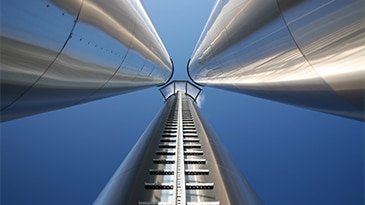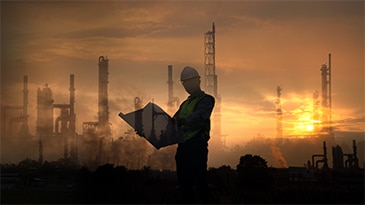Every executive at every industrial company we have ever talked with wants these three zeroes:
- zero casualties
- zero environmental incidents
- zero breakdowns
Proper safety and environmental conduct are crucial to maintaining a manufacturer’s license to operate. Manufacturers closely monitor and track such conduct on multiple company dashboards, at plants and corporate headquarters. Companies also understand breakdowns are the leading cause of manufacturing losses — and often cause safety and environmental incidents. In 2016, the National Association of Manufacturers highlighted breakdowns consume 10% or more of the $14 trillion a year worldwide manufacturing business: $1.4 trillion every year! Clearly those three zeroes are very important.
Companies providing asset performance management (APM) software applications have wasted no time in directing their offerings at reducing productivity losses by avoiding breakdowns with timely warnings. Some solutions with advanced AI and machine learning can deliver impending failure alerts weeks and months in advance with extremely accurate declaration of time-to-failure. A select few combine predictive analytics that tell you what’s likely to happen with prescriptive analytics advising steps to avoid the situation and prevent those breakdown incidents altogether.
However, overall manufacturing performance includes much more than profitability alone, so how can such AI software assist in managing the zero for safety and the zero for environmental incidents?
For over 90% of its operating time a plant will run smoothly with few disturbances, which process operators can easily manage. Transient, changing conditions occur far less often but exert the greatest stress on the plant and the operators, and can adversely affect personnel safety, besides environmental performance. While planned startups and shutdowns present some risk, the worst and most dangerous scenarios are unplanned shutdowns due to equipment breakdowns, when the bulk of all crisis situations occur. Unlike planned startups and shutdowns, during breakdowns there is no clear prepared plan providing the appropriate steps to manage precarious and unexpected moments to keep staff safe and avoid potential spills or gas flaring.
For example, an unexpected breakdown can create excess gases that have no place to go but the flare stack, where everyone sees those greenhouse gases emitted to the atmosphere. The absence of deliberated responses to unexpected breakdowns may place operating and maintenance staff at great danger. Things happen fast and people act on instant decisions that may not be carefully considered – exposing personnel to often unknown safety risks.
Time – the extreme early warning – is the first advantage in AI-based predictive applications. Cutting-edge AI-based condition monitoring can tell you well in advance an incident is likely to occur, giving the time to plan a safe and environmentally secure shutdown. You win since you have moved an unplanned to an orderly planned shutdown.
Advice is the domain of prescriptive analytics solutions. The technology may inform you that an early minor repair will prevent a major crisis later, such as replacing a lube oil system filter that left unattended would lead to a bearing failure and unanticipated shutdown. You win on environment and safety, plus maintenance costs and profitability.
Additionally, prescriptive maintenance technology can advise the steps to take to stay safe and environmentally guarded during and after a disastrous breakdown. Such technology can tell you what’s wrong, the root cause, and the scope, cost, and time required for service and repair. You win with precise advice and action and lots of warning time. Also, some technologies monitor and inform of spurious operating conditions that are damaging equipment and immediately, in real-time, advise precise steps to change the operation accordingly. Again, you win, avoiding the damage along with an unplanned shutdown and all related safety and environmental issues.
One more thing is possible. Some technologies know the individual pieces of equipment and how they are arranged and related in a whole system and understand how your mechanical and operating decisions affect forward-looking risk and the cost of different choices. When you receive a warning that a major machine has an unavoidable mechanical degradation and will fail in 50 days, you can forecast the risk you’re taking in delaying the shutdown for 10 days, 20 days or 40 days. What does it mean for parts, maintenance availability, operating profitability? Once such information is known, operations, reliability/maintenance and marketing/logistics departments can collaborate to determine the correct course of action that minimizes risk and cost. You win again with safer, planned action that maximizes productivity in undesired circumstances.
In summary, avoiding unexpected breakdowns results in great improvements in safety and environmental performance, besides minimizing losses and improving productivity. Leading companies are forging ahead with AI-based APM technologies that drive to deliver zero, zero, zero -- and in doing so, greatly improve their profitability, competitiveness and social conscience.
To learn more about how asset performance management can reduce unplanned downtime to new lows, read Maximize Safety, Sustainability and Productivity by Turning Unplanned Downtime Into Planned Downtime.



.jpg?sc_lang=en&h=205&w=400&la=en&hash=E34B7AE8742E488091A1572FDD65ADEE)


Leave A Comment